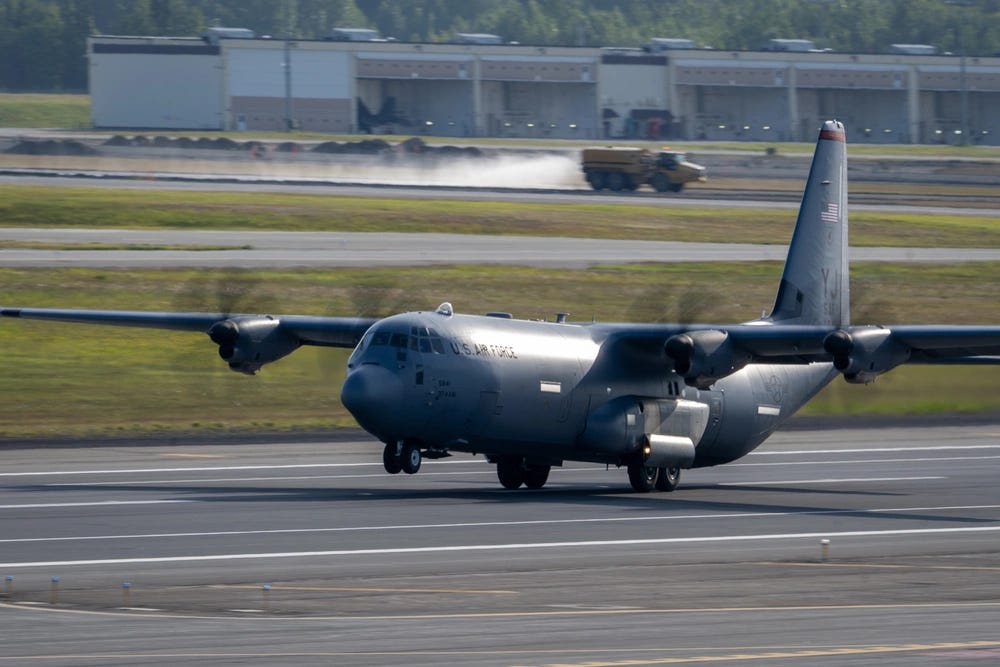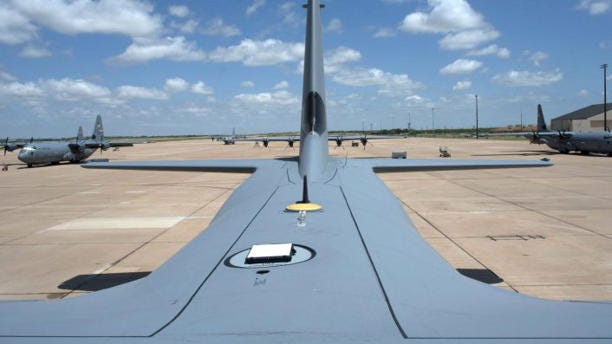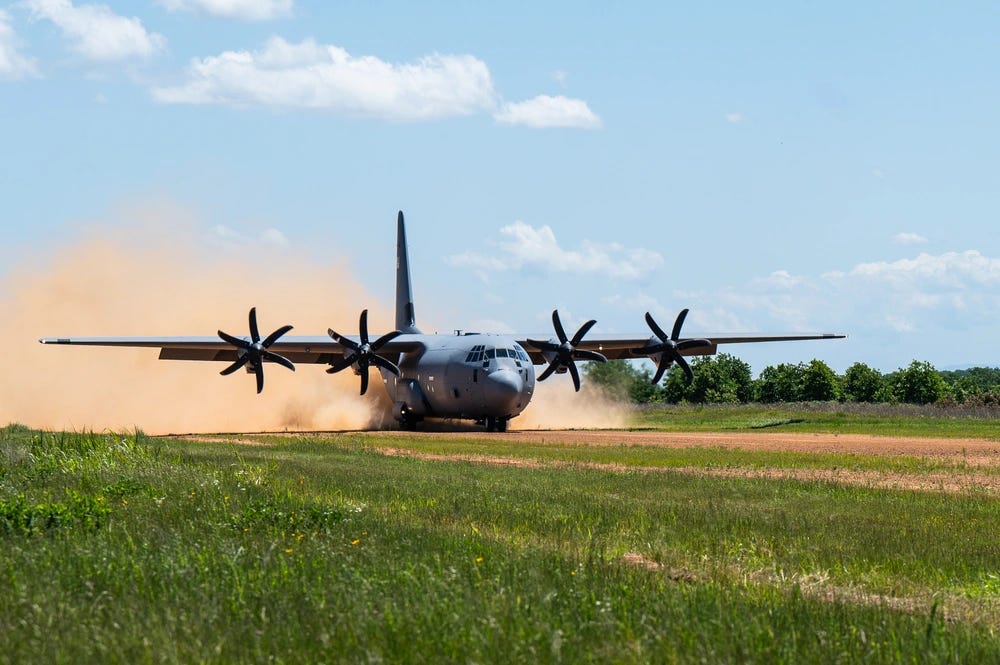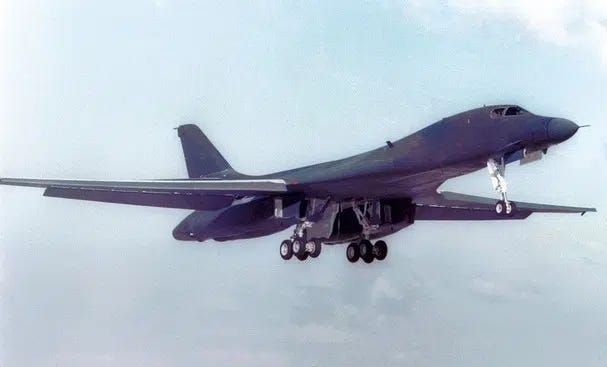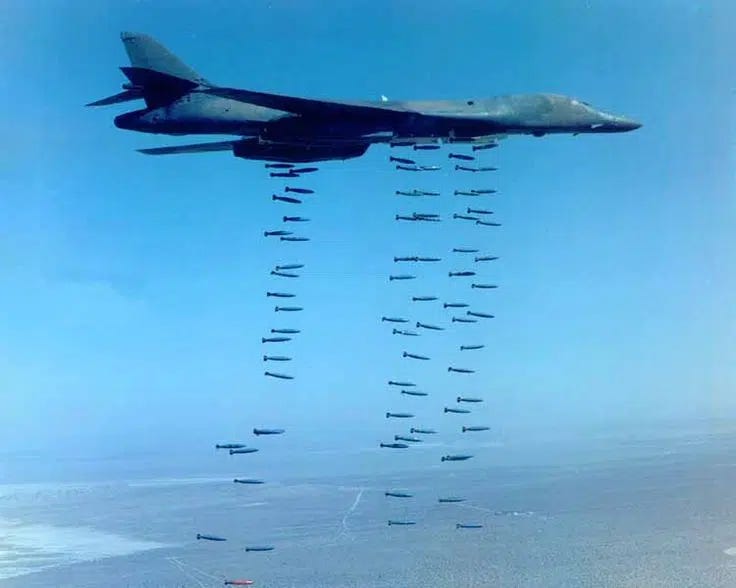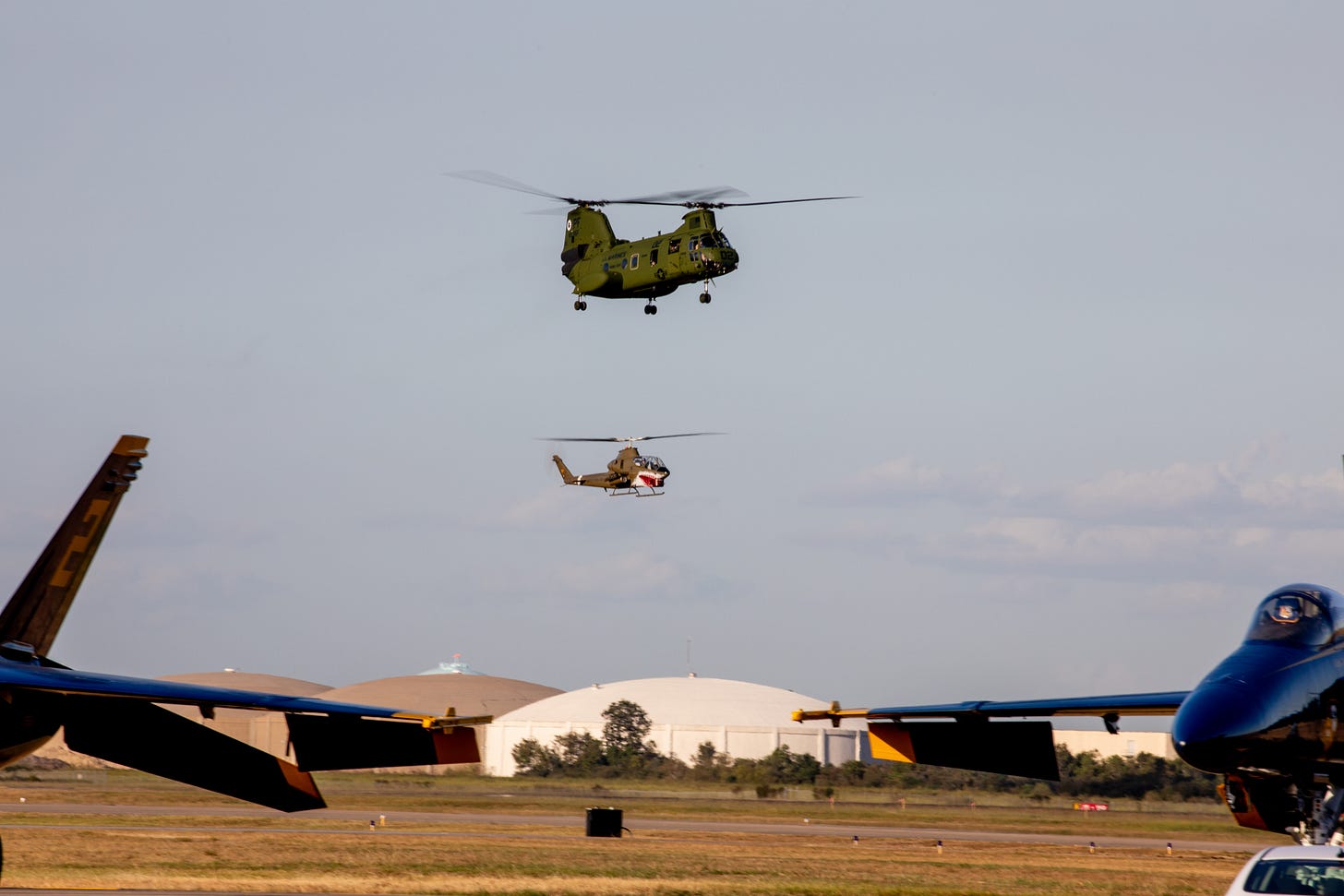Connected in Combat: How a C-130J from Dyess Is Shaping the Future of Air Mobility
Also, looking back on the B-1B Lancer's Arrival at Dyess Marked the Dawn of a New Era in Strategic Bombing
“The battle sir, is not to the strong alone; it is to the vigilant, the active, the brave.” - Patrick Henry
Mission Briefing
Plug-and-Play SATCOM: C-130J at Dyess Tests SpaceX Starshield for Agile Combat Ops
The future of air mobility just got a tactical upgrade. On June 4, 2025, a C-130J Super Hercules from the 317th Airlift Wing at Dyess AFB successfully tested SpaceX’s Starshield system—marking a key milestone in the Air Mobility Command’s push for resilient, secure, and modular communications in contested environments.
As part of AMC’s ambitious “25 by 25” initiative—aiming to equip 25% of its fleet with next-generation tactical communications by the end of 2025—the Dyess-based Hercules flew with a Starshield “mini hatch-mount” antenna installed on the aircraft’s escape hatch. The system is part of the new Joint Deployable Airborne Package, offering broadband-level connectivity via secure Line-of-Sight (LOS) and Beyond-Line-of-Sight (BLOS) comms—without a single permanent modification to the aircraft.
The goal? Enable fast, secure data sharing on the move. That means real-time intelligence updates, mission re-tasking, logistics coordination, and situational awareness all while airborne, even in the heart of a denied or degraded communications zone. According to AMC leadership, this capability directly supports agile combat employment (ACE), distributed operations, and adaptive basing strategies critical to peer-conflict scenarios in the Pacific and Europe.
Low Profile, High Impact
The test featured a square hatch-mounted antenna raised from inside the cargo hold, designed to be installed and removed by regular maintainers—no depot time or special crew training needed. Once active, the system linked to SpaceX’s Starshield Low Earth Orbit (LEO) satellite constellation, providing high-throughput, low-latency connectivity. It supports up to four independent tactical networks at various classification levels and integrates with existing onboard aircraft systems.
Darrell Wheat of the Joint Communications Support Element described the goal simply: “Deliver real-time, accurate information while in transit—enabling informed decisions in flight.”
Personnel from the 317th Maintenance Squadron and the Army’s 4th Joint Communications Support Element conducted test card evaluations, scanned for frequency interference, and confirmed connectivity across multiple secure channels using spectrum analyzers and high-frequency radios.
Not the First Flight—But a Leap Forward
Though the Air Force has previously explored commercial satellite internet, including demonstrations of Starlink terminals in Japan and video calls from Diego Garcia, this marks a deeper integration of military-hardened satellite infrastructure. Starshield is a Department of Defense variant of Starlink designed for secure tactical use, and the system’s modular install supports both mission planning and rapid adaptation.
The C-130J’s upgrade comes as AMC continues testing plug-and-play SATCOM systems across its fleet. In 2024, the command evaluated similar roll-on/roll-off communications terminals aboard KC-46 tankers during Exercise Bamboo Eagle 24-3. That trial enabled SIPR/NIPR networks, VoSIP calls, and secure data relays from the Pacific to the continental U.S.—validating concepts that are now being fielded to frontline aircraft like the Hercules.
A Constellation for Combat
Starshield isn’t just a niche experiment. Since 2020, SpaceX has quietly launched prototype satellites into LEO to support the system, with contracts from the Pentagon and the National Reconnaissance Office totaling over $1.4 billion. Its architecture aligns closely with the Space Force’s Proliferated Warfighter Space Architecture (PWSA), designed to create a resilient web of space-based comms and missile tracking.
The U.S. Navy and Marine Corps are also onboard—literally. Starshield antennas have been deployed aboard KC-130Ts, Navy range instrumentation ships, and Marine aviation detachments in Japan. With this test at Dyess, the Air Force is solidifying its path to truly networked, agile, and survivable air mobility operations.
From Texas to the Tactical Edge
As the B-21, F-35, and other platforms push the boundaries of stealth and precision strike, the humble C-130J is transforming into a high-tech logistics node—connected, aware, and mission-ready. AMC’s initiative, once labeled “not possible” by former commander Gen. Minihan due to budget concerns, is now showing real progress thanks to innovative partnerships and smart, scalable systems.
No hardwiring. No depot downtime. Just mission-ready connectivity when and where it's needed. That’s the kind of capability that turns a tactical airlifter into a strategic enabler.
And it all started on a Texas tarmac—with a hatch, a radio, and a view to the stars.
This Week in Aviation History
7 July 1985 – The B-1B Lancer Enters Service
The U.S. Air Force’s Strategic Air Command took delivery of its first operational Rockwell B-1B Lancer—tail number 83-0065, fittingly named Star of Abilene. It arrived at Dyess Air Force Base in Abilene, Texas, and would serve faithfully for nearly 18 years before being retired on March 1, 2003. Today, it stands on display at Dyess, a monument to a bomber that redefined American airpower.
The B-1B Lancer—often nicknamed “The Bone” (from B-One)—is a swing-wing, supersonic, long-range strategic bomber designed for low-level penetration missions. Measuring 146 feet in length with wings that sweep from 79 to 137 feet depending on flight conditions, the B-1B was built to be both fast and flexible. Four General Electric F101-GE-102 afterburning turbofan engines give the aircraft blistering performance: Mach 1.25 at altitude or 700 mph hugging the deck at 200 feet. With aerial refueling, its effective range stretches across continents.
Unlike its predecessor, the canceled B-1A, the B-1B was optimized for speed at low altitude and stealth against Soviet radar systems. Its three internal weapons bays can haul an enormous payload—up to 84 Mk.82 500-pound bombs or 24 2,000-pound bombs. Its total maximum takeoff weight is a staggering 477,000 pounds.
Between 1983 and 1988, 100 B-1Bs were built at Air Force Plant 42 in Palmdale, California. While the Lancer's future is uncertain amid shifting priorities and evolving threats, as of 2018, 62 B-1Bs remained in service.
The arrival of the Star of Abilene in 1985 marked more than just the induction of a new bomber—it was the beginning of a new era in strategic airpower. The B-1B continues to be a potent symbol of speed, firepower, and American air dominance.
In Case You Missed It
Since we are talking about the B-1:
Photo Outlet
Every issue of Hangar Flying with Tog gets you a free image that I’ve taken at airshows:
Feel free to use these photos however you like, if you choose to tag me, I am @pilotphotog on all social platforms. Thanks!
Post Flight Debrief
Like what you’re reading? Stay in the loop by signing up below—it’s quick, easy, and always free.
This newsletter will always be free for everyone, but if you want to go further, support the mission, and unlock bonus content, consider becoming a paid subscriber.
Your support keeps this flight crew flying—and I couldn’t do it without you.
– Tog



